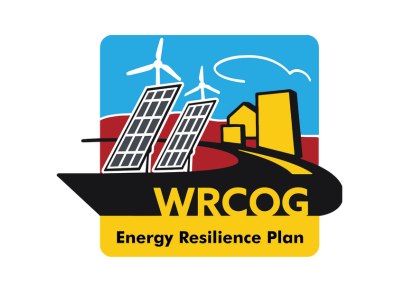Energy Resilience Plan
EnergyOverview
The Energy Resilience Plan is a comprehensive guidance document developed by WRCOG to address increasing power interruptions caused by environmental hazards such as wildfires, extreme heat, flooding, and Public Safety Power Shutoffs (PSPS). The Plan is designed to help WRCOG and its member agencies better withstand and adapt to the impacts of climate change by enhancing both facility and community resilience. It also aligns member agencies with California’s climate goals through strategic project development and implementation of energy resilience solutions.
Background
Over the past few years, Californians have lost power due to climate hazards either directly impacting local infrastructure or necessitating public safety power shutoffs (PSPS). Extreme heat days, wildfires, and flooding are all predicted to increase in the subregion due to climate change. These challenges will be exacerbated by large population growth in the region, which will increase energy demand and further stress the electric grid.
In 2022, with support from the Bay Area Council’s California Resilience Challenge, WRCOG developed the Energy Resilience Plan as a response to increasing power outages. The Energy Resilience Plan is a guidance document that member agencies can use to plan for investments into existing buildings to reduce impacts from power outages and improve community resilience towards climate issues and emergency events. This Plan consists of two core actions: 1) Identifying and prioritizing critical facilities, and 2) designing for energy resilience with microgrids.
For future decision-making, the Plan provides information on how to prioritize public facilities for implementation of energy efficiency upgrades, local energy generation, battery energy storage systems, and microgrids to increase facility and community resilience. The Plan outlines four evaluation factors – social vulnerability, climate hazards, facility operational needs and existing infrastructure – that are used to identify and prioritize facilities in need of resilience upgrades and investment. These four factors, along with possible resilience interventions, are used and discussed in the Plan through microgrid feasibility studies.
WRCOG Water Systems Resiliency Study
Energy Resilience Plan 2.0
In 2023, WRCOG began development of the Energy Resilience Plan (ERP) 2.0 to enhance infrastructure and assist communities in Western Riverside County in preparing for and responding to emergency events and power outages. The ERP 2.0 focuses on exploring the feasibility of implementing microgrids and community resilience centers at key facilities. This Plan is designed as a guidance document for member agencies, helping them plan investments in existing buildings to reduce the impacts of power outages and improve community resilience to climate and emergency events
The Energy Resilience Plan 2.0 is supported by the Adaptation Planning Grant at the Governor’s Office of Land Use and Climate Innovation (LCI), formerly the Office of Planning and Research (OPR). The Adaptation Planning Grant Program is an initiative of OPR’s Integrated Climate Adaptation and Resiliency Program (ICARP). ICARP advances climate adaptation and resilience in California by coordinating investments, partnerships, and climate science to ensure people, natural systems, and the built environment are protected, prepared, and thrive in the face of climate change.
The ERP 2.0 is expected to be complete in 2026 and will include up to 18 microgrid feasibility studies and up to nine community resilience center feasibility studies. Additionally, the ERP 2.0 will include results on the community outreach conducted for the proposed community resilience centers, a Funding/Financing Memo, an Implementation Plan, and a Microgrid Regulatory Memo.
WRCOG ERP 2.0 Community Engagement Plan Flyer


